Marketing for Dermatology Practices, Using PLATINUM Solution. Typical Pricing $999/mon
Marketing for dermatology practices primarily involves building a strong online presence through a user-friendly, high conversion rate website, utilizing search engine optimization (SEO) to rank well in search results, leveraging social media platforms like Facebook and Instagram to engage patients, and running targeted advertising campaigns to reach potential clients actively searching for skin care solutions. Dermatology providers are also extending their services into cosmetic (cash-pay) non-insurance based services. This trend started during Covid, most of our dermatology customers have also added cosmetic, aesthetic or medical weight loss (like semaglutide-GLP1) services.

Many dermatology practices have also added aesthetic services, some examples include: Fillers, laser treatments, Semaglutide GLP-1, Chemical peels Dermal fillers, Hydrafacials.
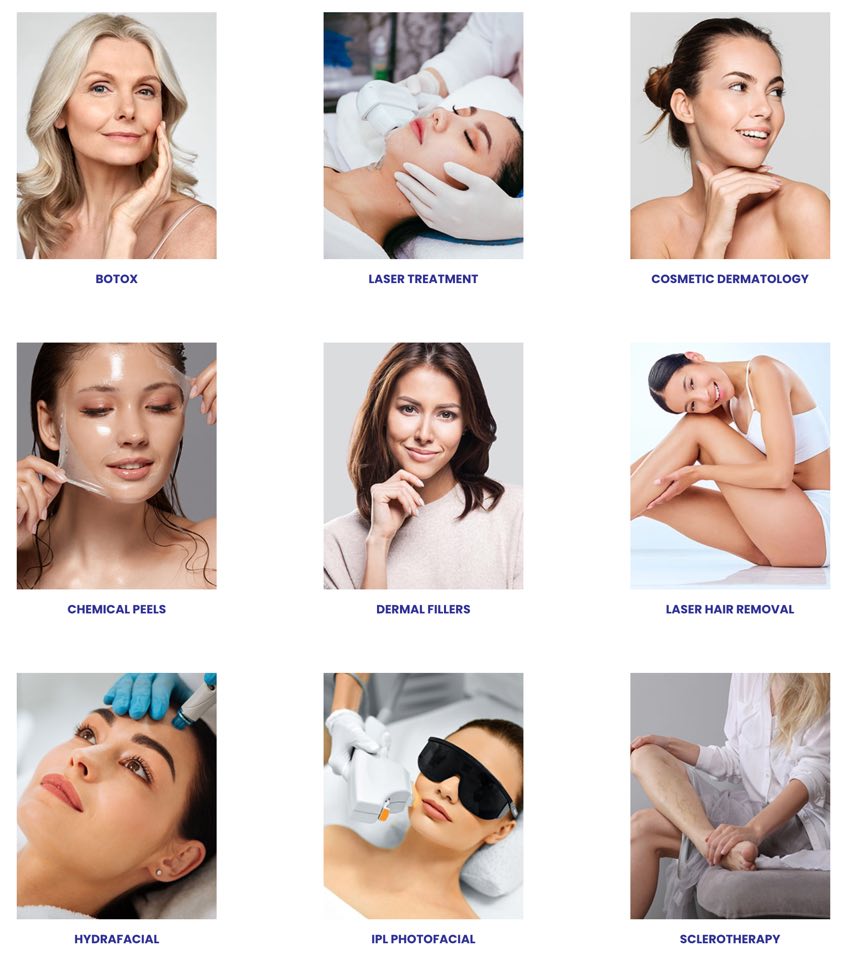
Example of marketing dashboard of a dermatology practice, using PatientGain’s PLATINUM Service
A live medical marketing dashboard for a practice provides a real-time, centralized view of key performance indicators (KPIs) related to marketing efforts, helping to track and optimize campaign performance, new patient conversions, engagement, and overall medical marketing for your practice. It aggregates data from 20+ applications, AI agents and marketing channels, making it easy to monitor and understand the impact of different strategies.
In the example below in the month of April: If a medical receives 100 website visits and converts 7 of those visitors into new leads, their website conversion success would be 7%. See example below: In the month of April , 2264 human being prospects visited the website, from SEO, Google Ads and Social Media Ads. 481 of these prospect clients contacted the practice and indicated that they were “new patients” rather than existing patients. PatientGain’s apps divide all contacts into new or existing clients/patients, and removes duplicates and sales calls. So in this case website conversion success rate is 21.25 percentage.
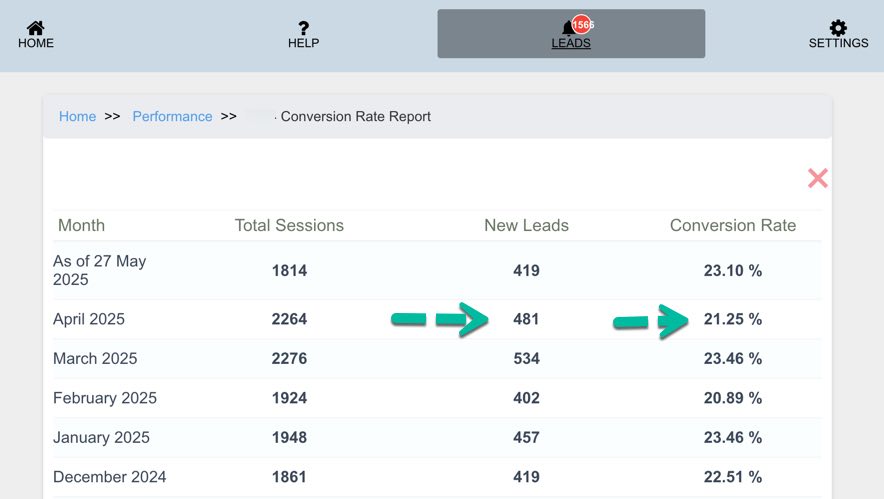
Key Steps to Market a Dermatology Practice
Marketing a dermatology practice effectively requires a combination of digital marketing, Search Engine Optimization for dermatologists, patient engagement strategies, and reputation management to attract new patients and retain existing ones. Below is a comprehensive guide that integrates proven marketing tactics with AI-powered solutions to maximize patient acquisition and retention.
1. Define Your Target Audience and Niche
Understanding your ideal patients helps create more effective marketing campaigns. Identify your target demographics, such as age, gender, location, and income level. Determine your USP (Unique Selling Proposition), specialty areas, such as cosmetic dermatology, acne treatment, skin cancer screenings, or pediatric dermatology. Tailor your marketing messages to highlight your expertise and unique services.
For example, a dermatology practice specializing in cosmetic, medspa procedures should focus on fillers, laser treatments, and skin rejuvenation to target aesthetic-conscious patients.
2. Build a Strong Online Presence (Start with a modern, high-conversion website Website)
A professional website and strong digital presence ensure your practice is easily found by potential patients. Your website should be modern, mobile-friendly, should load within 4 seconds on mobile devices, and user-friendly. It should showcase your services, team, patient testimonials, and before-and-after images while implementing AI-powered powered applications to assist visitors and capture leads.
Medical SEO and local SEO strategies include optimizing your website with relevant keywords such as “dermatologist near me,” “best acne treatment,” or “skin cancer screening near me.” Use local SEO tactics such as Google My Business (GMB) optimization, online directory listings, and voice search optimization. Creating high-quality, AI-generated blog content on trending dermatology topics can also improve search rankings.
A dermatology clinic using PatientGain’s AI-powered SEO increased organic traffic by 45% in six months.
3. Leverage Digital Marketing
AI-driven marketing strategies ensure higher patient engagement and better conversion rates. Social media marketing involves engaging with potential patients on Instagram, Facebook, and TikTok with educational skincare content, live Q&As, and before-and-after transformations. Partnering with local beauty influencers can also increase visibility. AI-optimized social media scheduling ensures posts go live at peak engagement times. Using social auto-pilot can free up your time and allow you to post 20 posts per mon on Facebook, Instagram and on GMB each.
Email marketing should include educational newsletters, special offers, and appointment reminders. Automating patient follow-ups with AI-powered email and SMS campaigns and offering seasonal skincare promotions can encourage repeat visits.
Pay-per-click (PPC) advertising involves running Google Search Ads for targeted keywords like “best derma doctor near me” or “eczema dermatologist in [city].” Facebook and Instagram Ads can be used for high-engagement video promotions, and AI-powered retargeting ads can convert website visitors into booked appointments.
4. Enhance Patient Experience
Providing exceptional service and leveraging technology improves patient satisfaction and retention. Offering online booking options for easy appointment scheduling, implementing a secure patient portal for communication, medical records, and follow-ups, and using AI Intelli*Connect for 24/7 patient engagement and SMS/Texting app can enhance the patient experience. A MedSpa increased filler and BBL leads by 18% after adding PatientGain’s AI Intelli*Connect to their website.
5. Reputation Management
Your online reputation directly impacts patient trust and new bookings. Encouraging satisfied patients to leave reviews on Google, Yelp, Healthgrades, and RealSelf is essential. Monitoring and responding to online reviews, addressing concerns professionally, and using reputation management tools to automate review requests and track feedback can improve credibility.
6. Community Engagement
Engaging with the local community increases brand awareness and strengthens patient relationships. Hosting educational events or free skin check-up days at local health fairs, partnering with local businesses, gyms, and beauty spas for cross-promotions, and offering free skincare workshops at community centers can significantly increase local engagement.
7. Traditional Marketing Strategies
Even in the digital age, offline marketing can still be effective for dermatology practices. Print advertising in local magazines and wellness publications can help reach targeted audiences. Direct mail campaigns promoting special offers to local residents can drive new patient bookings. Radio and TV advertising can be used if your target audience listens to local stations or watches community-based TV.
8. Track and Analyze Results
Regularly monitoring marketing performance ensures continuous improvement and better ROI. Using PatientGain’s live performance dashboards to manage leads funnel, new patient phone calls, text messages, Email marketing, Google My Business , advertising spend on social media and Google ads. A dermatology practice using PLATINUM service from PatientGain increased conversion rates in six months. The average conversion rate was 4.1% After PLATINUM service, the conversion rate increased to 8.9%.
9. Stay Updated on Industry Trends
The field of dermatology is constantly evolving. Keeping up with new technologies and marketing trends ensures your practice stays ahead of competitors. Staying updated on new dermatological treatments like Morpheus8 RF Microneedling, PRP therapy, and AI-driven skincare recommendations can keep your practice competitive. Keeping up with Google’s SEO updates helps maintain high rankings, and exploring emerging platforms like social media for skincare education and patient engagement can further expand your reach.
10. Seek Professional Help
Marketing a dermatology practice can be time-consuming. Working with a specialized healthcare marketing agency can ensure maximum patient growth. Partnering with AI-driven marketing platforms like PatientGain provides comprehensive, automated marketing solutions. Using expert-designed social media campaigns, AI-powered SEO, and paid advertising strategies can boost visibility and revenue. Accessing HIPAA-compliant, high-converting marketing tools tailored for dermatology practices ensures compliance and efficiency.
To successfully market a dermatology practice, build a strong online presence with AI-powered SEO, leverage digital marketing through Google Ads, social media, and influencer partnerships, enhance patient experience with AI applications, implement a strong reputation management strategy for 5-star reviews, host local events, run traditional marketing, and analyze data-driven results.
Get started with AI-powered marketing from PatientGain Platinum.
What Is Cosmetic Dermatology?
Cosmetic dermatology is becoming an increasingly popular healthcare area that is growing every year. With more demand comes more doctors and providers opening facilities that specialize in this area. As such, there is more competition today than there was several years ago. For a Cosmetic Dermatology practice to grow and be successful, it needs a well-designed medical marketing plan.
Cosmetic dermatology is a branch of medicine that focuses on enhancing the appearance of the skin. It combines medical expertise with aesthetic treatments to address concerns like aging skin, wrinkles, sun damage, and other cosmetic issues.
Here’s a breakdown of what cosmetic dermatology entails:
What Cosmetic Dermatologists Do
Cosmetic dermatologists are medical doctors who have specialized training in dermatology and additional expertise in cosmetic procedures. They offer a range of treatments and services, including:
- Injectables: Dermal fillers, and other injectables to smooth wrinkles, restore volume, and enhance facial features.
- Skin Rejuvenation: Chemical peels, microdermabrasion, laser therapy, and other procedures to improve skin texture, tone, and reduce signs of aging.
- Body Contouring: Treatments like CoolSculpting or liposuction to remove unwanted fat and sculpt specific areas of the body.
- Laser Treatments: Laser hair removal, tattoo removal, and treatments for various skin conditions like acne scars, age spots, and vascular lesions.
- Skin Care: Recommending and providing medical-grade skincare products and regimens to maintain skin health and appearance.
Benefits of Cosmetic Dermatology
- Improved Appearance: Cosmetic dermatology can help address a variety of aesthetic concerns, leading to a more youthful, refreshed, and balanced look.
- Increased Confidence: When people feel good about their appearance, it can boost their self-esteem and overall confidence.
- Personalized Treatments: Cosmetic dermatologists tailor treatments to individual needs and goals, ensuring the best possible results.
- Non-Surgical Options: Many cosmetic procedures are minimally invasive or non-surgical, requiring little to no downtime.
Important Considerations
- Choosing a Qualified Professional: It’s crucial to select a board-certified dermatologist with specific training and experience in cosmetic procedures.
- Realistic Expectations: While cosmetic dermatology can achieve significant improvements, it’s essential to have realistic expectations about the outcomes.
- Potential Risks and Side Effects: Like any medical procedure, cosmetic treatments may carry some risks or side effects, which should be discussed with the dermatologist.
In summary, cosmetic dermatology offers a range of options for individuals looking to enhance their appearance and address skin concerns. While medical dermatology treats conditions on the skin that threatens a patient’s health, a cosmetic dermatology clinic has providers that treat patients for aesthetic reasons. A cosmetic dermatologist will provide services such as tightening sagging skin, smoothing wrinkles, or correcting skin tone. While these services do not serve a medical purpose, they help a patient look better, which often plays a role in mental health. The overall goal of many treatments at a cosmetic dermatologist’s office is to reverse the signs of aging and the effects. Patients often want to look healthier and younger.
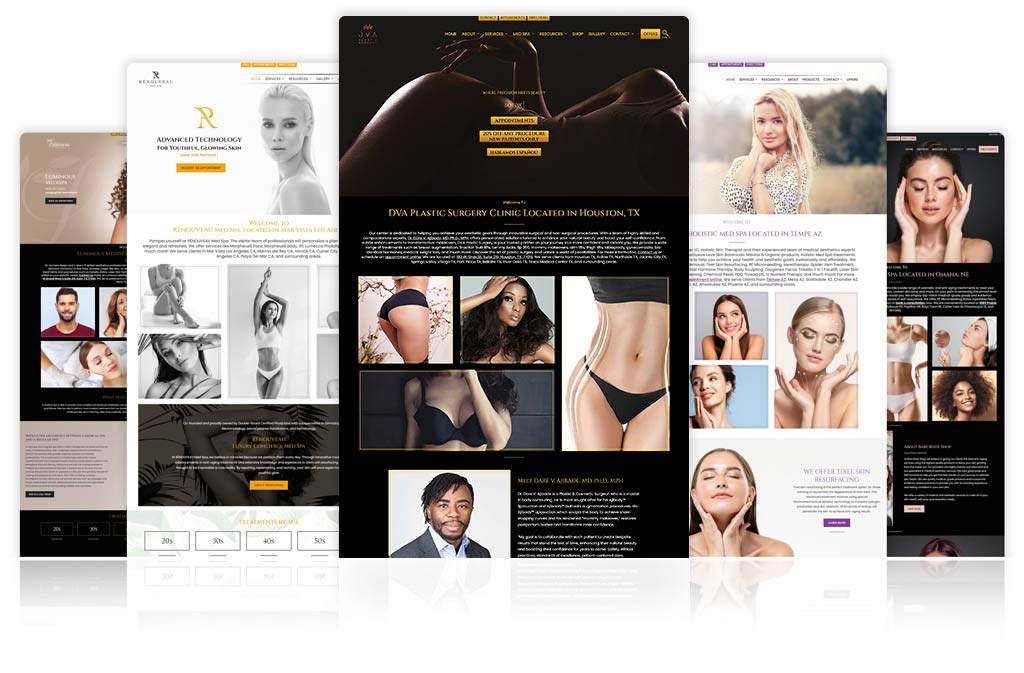
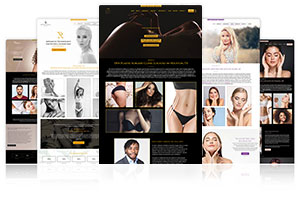
Summary
Marketing for dermatology practices primarily focuses on building a strong online presence through a well-designed website, utilizing search engine optimization (SEO), engaging social media campaigns, targeted advertising, and actively managing online reputation to attract new patients and retain existing ones;
The experts at PatientGain.com are ready to help you achieve the goals of your Cosmetic Dermatology practice. Our team has years of experience and can show you what we have done for other clinics in this field of healthcare. We look forward to speaking with you!

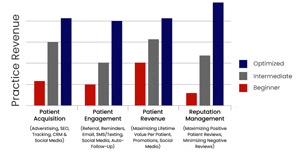
Define Your Target Audience and Niche
Success in the aesthetics, med spa, dermatology, and medical weight loss industries requires a laser-focused understanding of your ideal patient. A generic approach attracts a transient audience; a specific approach builds a loyal, high-value community around your practice. This expanded guide provides more detailed examples of patient personas and niche practices to help you translate these concepts into an actionable strategy.
Beyond Demographics: Expanded Psychographic Profiles in Action
Understanding the “why” behind a patient’s visit is crucial. Here are the previously mentioned psychographic profiles, expanded with real-world examples of their behaviors and preferences.
For Aesthetics and Med Spa Clients:
- The “Ageless Pursuer”
- In Practice, this looks like: A 52-year-old real estate agent who books her neurotoxin appointment every 3-4 months like clockwork. She brings in photos of herself from 10 years ago and asks, “How can we get back to this?” She’s highly interested in combination therapies like “stacking” microneedling with PRP and is the first to ask about new technologies like radiofrequency skin tightening she read about in a magazine. Her pain point isn’t just a wrinkle; it’s the fear of losing her vibrant, youthful identity.
- The “Preventative Planner”
- In Practice, this looks like: A 28-year-old graphic designer who follows five different injectors on TikTok. She comes in asking for “a sprinkle of Filler” or “just enough filler for hydration.” She is budget-conscious but sees these treatments as a long-term investment. She will ask detailed questions about downtime because she has a full social calendar and wants to plan her treatments accordingly.
- The “Wellness Advocate”
- In Practice, this looks like: A 45-year-old yoga instructor who is more interested in skin quality than erasing every line. She asks about medical-grade skincare, the benefits of chemical peels for texture, and whether IV vitamin drips can help with her energy levels. Her goal is to look healthy and radiant, not “done.” She chooses a provider based on their holistic philosophy.
For Medical Weight Loss Patients:
- The “Frustrated Dieter”
- In Practice, this looks like: A 48-year-old teacher and mother of two who tells you, “I feel like I’ve tried everything – keto, intermittent fasting, countless apps – and I lose 15 pounds just to gain 20 back.” She is skeptical but hopeful. She needs to see the scientific evidence behind your program and requires a high level of support and encouragement to overcome her history of “failure.”
- The “Health-Motivated Patient”
- In practice, this looks like: A 58-year-old executive who was recently diagnosed with pre-diabetes and high blood pressure. His doctor told him to lose 50 pounds. He isn’t motivated by aesthetics but by fear. He asks, “What’s the safest, most effective way to do this? My health depends on it.” He is data-driven and wants to see tangible improvements in his lab results.
Buyer Personas: Four Detailed Examples
1. Med Spa Persona: “Cosmetic Dermatology Dan”
- Name & Photo: Dan, a 46-year-old man in professional attire.
- Demographics: 46, Partner at a PR and Law firm, $350k+ income, married with two teenage kids, lives in the suburbs.
- Psychographics: Values his appearance as part of his professional brand. Believes looking refreshed and energetic helps him stay competitive with younger colleagues. He is discreet, values efficiency, and is not looking for a “spa” experience. His pain point is looking tired or “gruff” in high-stakes meetings.
- Motivations: Wants to reduce the deep “11” lines between his brows and soften his crow’s feet to appear more approachable and less stressed. He’s also curious about under-eye treatments for dark circles.
- Communication Preferences: Prefers discreet communication via text message for appointments. He researches online but will only book with a practice that appears professional, medically-focused, and has positive reviews from other men.
- A “Day in the Life” Narrative: Dan has a 7 AM board meeting. As he prepares, he notices the deep frown lines in the mirror and feels they make him look angry, even when he’s not. He’s heard from a colleague about “Brotox” and decides to discreetly research providers during his lunch break. He looks for a practice with a male-friendly website and books the latest appointment of the day to avoid running into anyone he knows.
2. Medical Dermatology Persona: “Medical Martha”
- Name & Photo: Martha, a 68-year-old woman with a kind smile, wearing a sun hat.
- Demographics: 68, Retired, fixed income, widow, lives in a suburbs
- Psychographics: Health-conscious and diligent about her annual check-ups. She trusts doctors implicitly and follows their advice to the letter. She is practical and not concerned with vanity, but is very worried about skin cancer after a friend had a melanoma removed.
- Motivations: Her primary care physician referred her for her first full-body skin exam due to her age and history of sun exposure. Her goal is purely preventative – to catch any potential issues early.
- Communication Preferences: Prefers phone calls to emails. She appreciates clear, simple printed materials explaining skin cancer risks and self-check procedures. She chose her dermatologist because her doctor recommended them.
- A “Day in the Life” Narrative: Martha spends her mornings gardening. While putting on sunscreen, she notices a new, oddly shaped mole on her arm. Recalling her friend’s recent surgery, she feels a wave of anxiety. She immediately calls the dermatologist her doctor referred her to and books the first available appointment for a skin check, bringing a notepad to write down everything the doctor says.
3. Medical Weight Loss Persona: “Wellness-Focused William”
- Name & Photo: William, a 55-year-old man in business-casual attire.
- Demographics: 55, IT consultant, $150k income, married, struggling with joint pain and low energy.
- Psychographics: He used to be very active but has let his health slide due to a demanding job and travel schedule. He’s motivated by a desire to get back to his old self – to be able to play with his future grandchildren and enjoy an active retirement. He’s interested in the science of weight loss and how it connects to overall wellness.
- Motivations: His knee pain is making it hard to walk, and his doctor told him losing 40 pounds would significantly help. He is specifically looking for a physician-supervised program that might include options like GLP-1 agonists (e.g., Semaglutide) because he wants a powerful tool to kickstart his journey.
- Communication Preferences: Appreciates detailed information sent via email. He wants to see clinical data and testimonials. He is likely to attend a free informational webinar before committing.
- A “Day in the Life” Narrative: William groans as he gets out of bed, his knees aching. He skips his morning walk again. At work, he feels sluggish and struggles to focus. He sees a targeted Facebook ad for a “Physician-Led Weight Loss & Vitality Program” that mentions joint pain, energy levels, and modern medical solutions. Intrigued by the promise of a comprehensive health overhaul, not just a diet, he clicks the link to sign up for a free consultation.
Expanded Niche Examples: What It Looks Like in Practice
- Niche: The “Bridal Beauty” Boutique (Aesthetics/Med Spa)
- The Vibe: The space is bright, airy, and “Instagrammable” with floral accents, plush white seating, and great lighting.
- The Services: Packages are named things like “The Blushing Bride” (Hydrafacial, Dermaplaning, Lip Flip) and “Mother of the Glow” (Skin Tightening, Filler). They offer group packages for the entire bridal party. They specialize in treatments that create a perfect canvas for makeup with minimal downtime.
- The Marketing: They partner with wedding planners, bridal boutiques, and photographers. Their Instagram is filled with photos of radiant brides. They run ads targeting women whose Facebook status is “Engaged.”
- The Experience: Every bridal client receives a consultation that includes a timeline, planning treatments around their engagement photos, bridal shower, and the big day itself. They offer a celebratory glass of champagne at the final appointment.
- Niche: The Ethnic Skin & Hair Specialist (Dermatology)
- The Vibe: Professional, clinical, and inclusive. The waiting room features artwork and magazines representing diverse cultures. Educational materials are available that address conditions common in skin of color, like hyperpigmentation and keloid scarring.
- The Services: They are experts in treating hyperpigmentation and melasma with tailored chemical peels and laser treatments safe for darker skin tones. They offer specialized treatments for traction alopecia and pseudofolliculitis barbae (“razor bumps”).
- The Marketing: They build strong referral relationships with primary care doctors in diverse communities. They create educational blog and video content like “The 5 Best Sunscreens for Dark Skin” or “How to Safely Treat Acne Scars on Asian Skin.”
- The Experience: Patients feel seen and understood. The consultation addresses their specific concerns with cultural competency and deep medical expertise, building immense trust and loyalty.
From Persona to Promotion: Translating Insights into Marketing
Your audience insights should directly fuel your marketing messages.
- Targeting “Cosmetic Dermatology Dan”:
- Ad Platform: LinkedIn or Forbes.com
- Ad Headline: “Subtle Refinements, Powerful Results. Look as Sharp as You Think.”
- Ad Copy: “In today’s competitive landscape, confidence is key. Our discreet cosmetic dermatology services for men are designed to reduce signs of stress and fatigue, helping you maintain your professional edge. Schedule a confidential consultation.”
- Targeting “Preventative Patty”:
- Ad Platform: Instagram Reels or TikTok
- Video Concept: A fast-paced, visually appealing video showing the process of a “glass skin” facial or a “lip flip.”
- Text on Screen: “Your 40-year-old self will thank you for what you do today. ✨ #PreventativeFiller #FutureYou #SkincareInvestment”
- Call to Action: “DM us ‘GLOW’ to learn about our Under 30 packages!”
- Targeting “Medical Martha”:
- Marketing Channel: Physician outreach and local community newsletters.
- Brochure Headline: “Peace of Mind is Skin Deep. Your Annual Skin Health Exam.”
- Message: “Early detection is the best protection against skin cancer. Our compassionate dermatologists are dedicated to providing thorough, attentive skin cancer screenings. Recommended by doctors you trust.”
